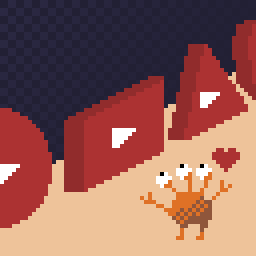
Sundry Sunday is our weekly feature of fun gaming culture finds and videos, from across the years and even decades.
This one is really short. It’s a capture from a mod of Tears of the Kingdom that changes many game messages.
The Flipside of Gaming

Sundry Sunday is our weekly feature of fun gaming culture finds and videos, from across the years and even decades.
This one is really short. It’s a capture from a mod of Tears of the Kingdom that changes many game messages.
Back on April 12th, WIRED Magazine published an article about Space Invaders 45 years after its original production. In it they spoke with the creator of iconic arcade game, Tomohiro Nishikado, who now considers it the best game he ever made.

Despite them including the Atari 2600 version as if it were the original (the two games are similar but ultimately rather different), it’s a nice look back.

The arcade industry existed for six years before Space Invaders, a period that is often forgotten. Two games in particular I think kicked off the meteoric, and short-lived, rise of arcade gaming as a cultural force: Atari’s Asteroids, and Taito’s Space Invaders. Asteroids was actually more popular in the U.S., but Space Invaders was still one of the most successful arcade games ever sold in the States. In Japan, its success was, and I believe still is, unequaled.
Video games at that time were tied to their hardware in a way they almost never are now. Gaming is now mostly done with graphics hardware that is mostly replaceable. Back then, arcade hardware was usually purpose-built, with the capabilities the design required. Space Invaders is an example where the hardware constraints really made the game. It was one of the few games at the time to use framebuffer hardware: a bank of memory that corresponded directly to the display, in Space Invaders’ case, every pixel on screen echoing the state of a dot in memory.
There were a number of reasons that this wasn’t used by most games. Memory was expensive, and a screen-sized bitmapped display needed a lot of it. More colors requires even more memory to be able to depict all the possible states, so Space Invaders’ screen was monochrome with a color overlay.
Possibly the biggest reason of all: it takes a CPU a lot of time to shuffle around all those bits. Computers are fast, but they still have their limits. Space Invaders uses an Intel 8080, the chip they made before the 8086 which was the foundation for the x86 line, but still only an 8-bit processor.
Space Invaders, ingeniously, uses the 8080’s slowness at updating the framebuffer as a strength. As the armada of aliens moves across the screen, the processor is updating them as rapidly as it is able, erasing and drawing each into its new position one at a time. As the player shoots them, there are fewer ships to draw, and so it can get its updating done faster. This naturally causes the fleet to progress across the screen faster and faster as they’re wiped out, with the last alien rushing across with all that CPU power freed up by the destruction of its comrades.
Space Invaders had even more clever ideas in its design than that. It was an early example of a game using a life system, borrowed from the limited balls players were allowed in pinball games. But also, the game had a sudden loss condition: if any alien managed to make it all the way down the screen to the ground, the game instantly ended.
There was considerable strategy in deciding which aliens to shoot first. Wiping out rows from the bottom of the formation delayed the whole armada from reaching the bottom by one pass across the screen, but if the player destroyed a column off one of the sides, all of those aliens would have to travel further before they could descend a level. Or, if the player was prepared to take a bit more of a risk, they could wipe out columns in the middle of the formation, which means the aliens would descend more rapidly, but leaving a hole in the ranks through which to shoot the Mystery Ship that passed by at the top of the screen.

The game even has a couple of secret features, which is pretty interesting considering the game was released in 1978. The points awarded by the Mystery Ship appeared random at first, but was in fact went through a cycle that advanced every time the player fired a shot. And, as documented in Craig Kubey’s The Winner’s Book of Video Games, if a skilled player could annihilate a whole rack of aliens while leaving one of them from the two lowest rows of the board, it would leave a trail behind it. digipress.com reveals that this was caused by a bug in the code, but later versions of Space Invaders promoted this trick to a legitimate secret.
Space Invaders has inspired many remakes and revivals through the years, the first, Space Invaders Part II, also known as Space Invaders Deluxe, introduced new kinds of aliens that split in two when shot. That’s not to be confused with the later Space Invaders DX, released in 1993. Before that came Return of the Invaders in 1985, and Space Invaders Part IV: The Majestic 12 in 1991. A while after there were Space Invaders Extreme, which got its own sequel, and other games I can’t be bothered to look up right now. Recently, in 2016, arcades have even seen a fairly interesting Space Invaders lightgun game from Raw Thrills, called Space Invaders Frenzy. (I tend to be harsh on Raw Thrills here, but it’s actually pretty interesting!)
45 years. Not bad for an ancient 8-bit arcade game that struggled to shift black-and-white pixels around.
The ‘Space Invaders’ Creator Reveals The Game’s Origin Story (WIRED)
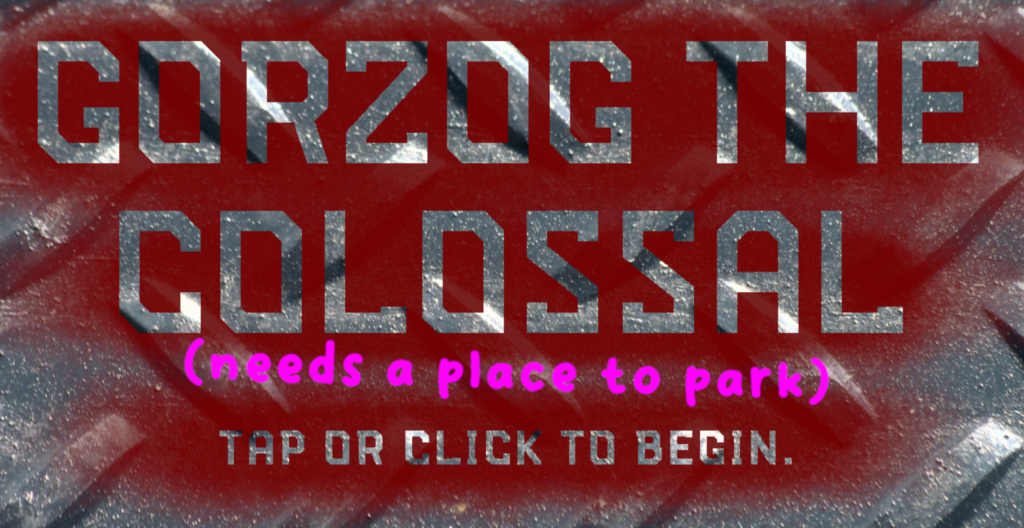
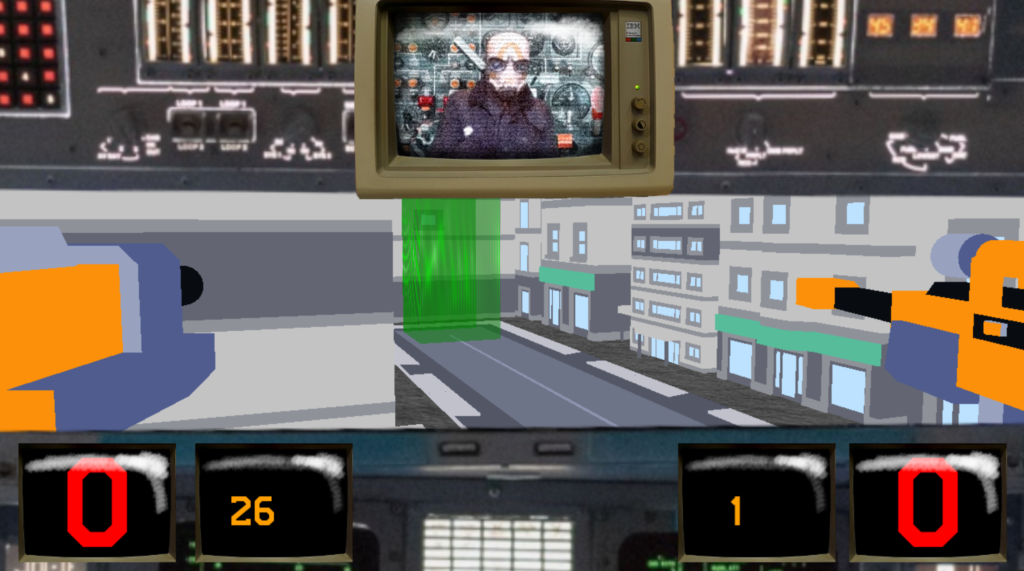
This is a silly, free browser-playable game, although one with a basic 3D engine. Use the mouse and cursor keys (or WASD, if that’s how you roll) to maneuver your giant walker mech through a city’s streets without causing too much property damage. The parking spots are represented as green pillars that extend far up into the sky. Finding just one isn’t enough; there’s a whole sequence you have to travel to, as each is unsuitable for different reasons, e.g., too far from the ammo dump, only for compacts, or parking is too expensive.
A lot of the fun is Gorzog’s voice-acted commentary on his parking adventure, so be sure to have the sound up!
Gorzog the Colossal Needs a Place to Park (itch.io, $0)
Let me tell you something about Nintendo games. While I have no knowledge from inside the company, either the Japanese or American sides, what I’ve seen over the years makes me pretty confident in this knowledge. There is a good chance it applies to other companies too, but I’ve noticed it most often from Nintendo. I share it now with you.
First, can you tell what the messages in these images have in common?
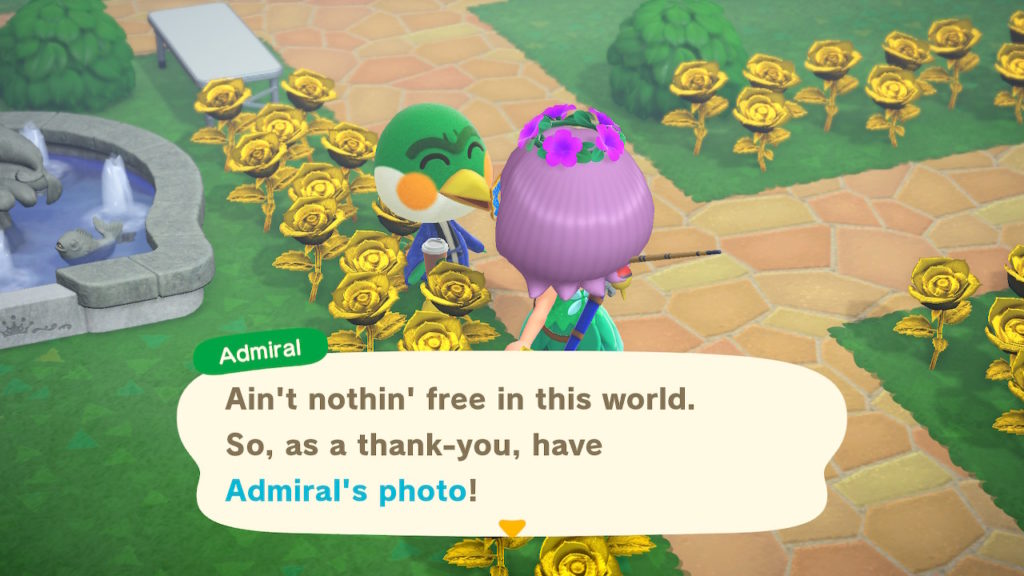
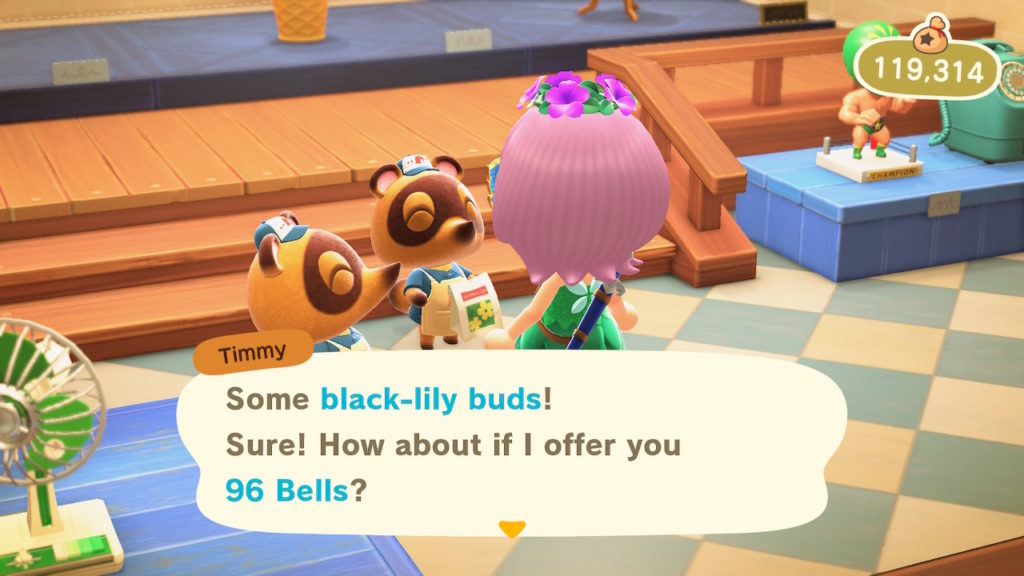
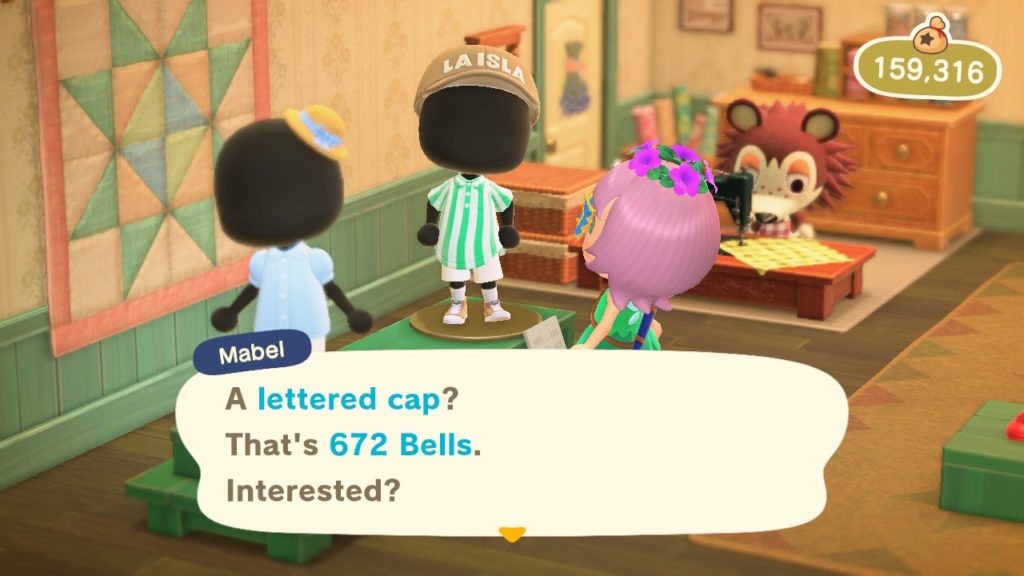
They all contain item names, but what’s more, they’re all written in such a way that the item name (along with whatever introductory articles it requires) is on a line to itself.
Nintendo games are written in Japan, and then localized to other countries. Localization usually involves translating, sometimes adjusting, the text, and sometimes graphics, to other languages. This process usually involves a bare minimum of engine work; the coding is largely ready for release at this point. It’s not supposed to need changing the code itself much, for localization.
Japanese fonts are mostly monospaced. Hiragana, katakana and kanji, the three kinds of Japanese characters, are depicted in them all with glyphs of the same size. I’m not sure this is why, but I think there’s a good chance it’s the reason, that text boxes in Nintendo games tend to not support that essential feature to all word processors made in the past three decades: word wrap. It’s not needed for Japanese generally, for the text will be written with newlines embedded. Most text isn’t dynamic, so it usually isn’t a problem.
Once in a great while, due to a localization error, this becomes evident. I remember seeing once a text line in Ocarina of Time, in a dialogue in Kakariko Village, where the text extended outside of the message window. It’s a bit surprising when it happens because usually Nintendo is good about catching it.
However, there is a weird implication of the need to keep all the words properly bordered within their message boxes: if a string has a dynamic part at all, a place where the text can vary, then the text around it must be written to account for the widest text that can possibly be put there.
This is generally true for most games I’ve seen, but where I notice it most frequently is in Animal Crossing games, which have a lot of dynamic text, and must account for the widest possible player, villager and, especially, item names, some of which are pretty long.
It is for this reason that, if a dialogue in an Animal Crossing game contains the name of an item, the other text on that line must be kept pretty short, to prevent the text from overflowing the bounds of the message box. Which is a pretty onerous localization requirement, when you think of it. As a result, the majority of dialogue texts in the game are written in such a way that the item name comes at the end of a sentence, so the inevitable following line break looks natural. This means a lot of characters in shop dialogue begin with an interjection of the item name followed by an exclamation point, so it won’t be so obvious that there’s going to be a lot of white space after the item.
Here are a few more examples from New Horizons:
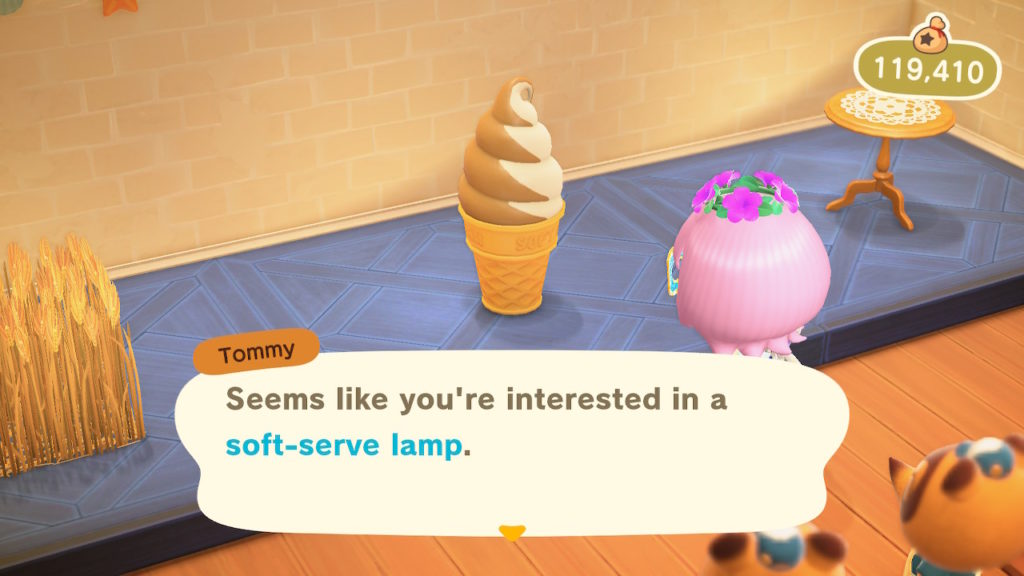
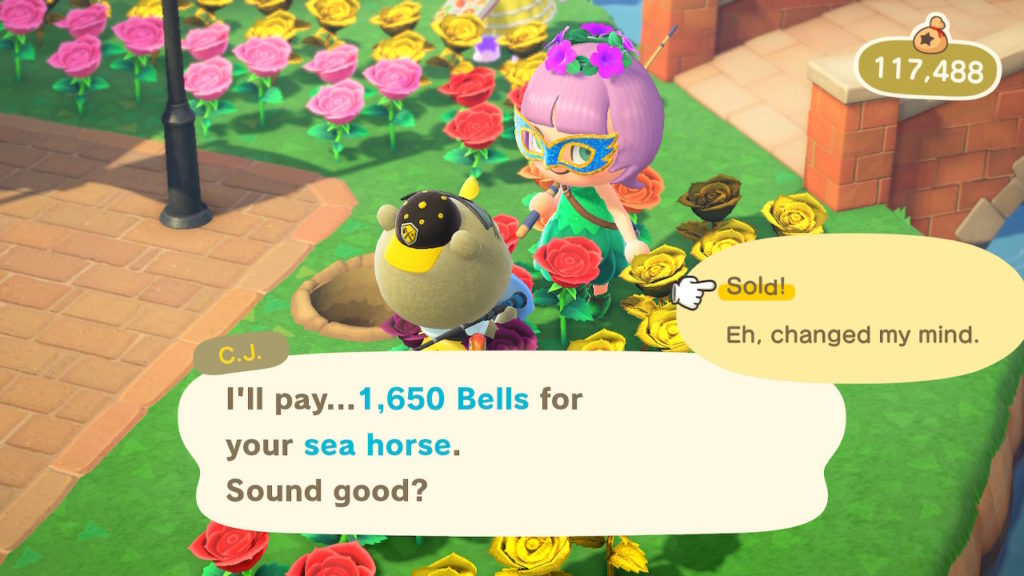
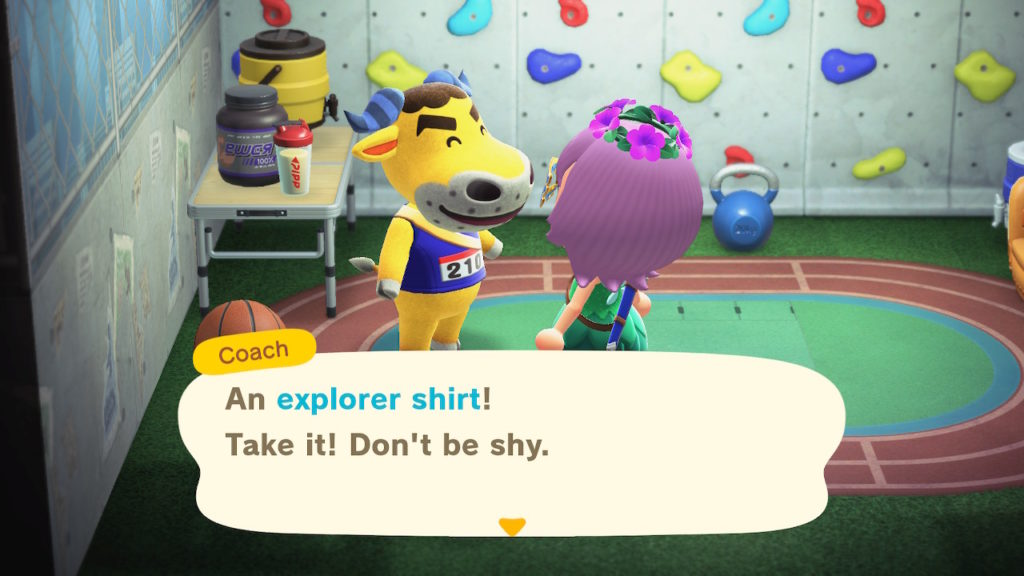
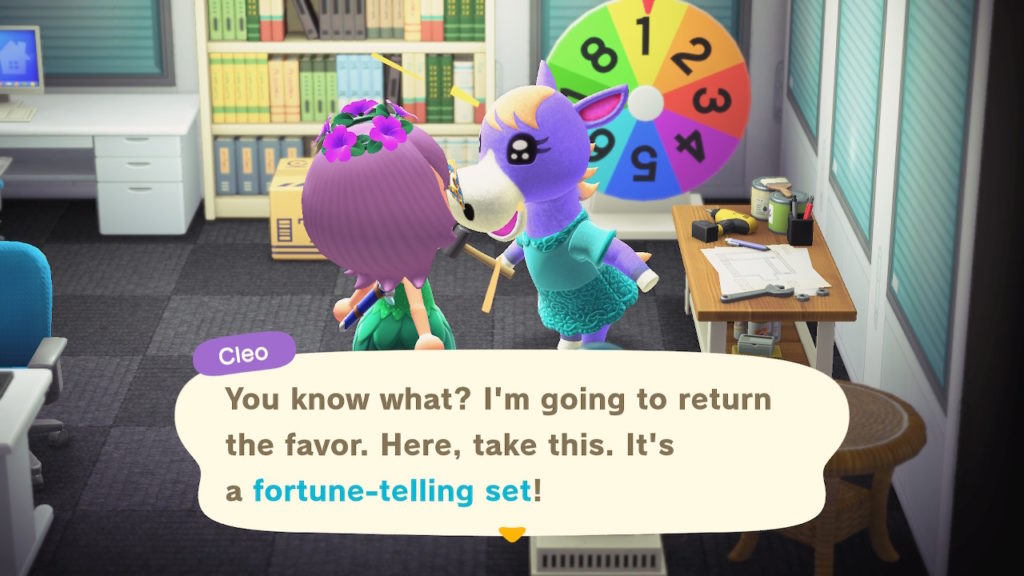
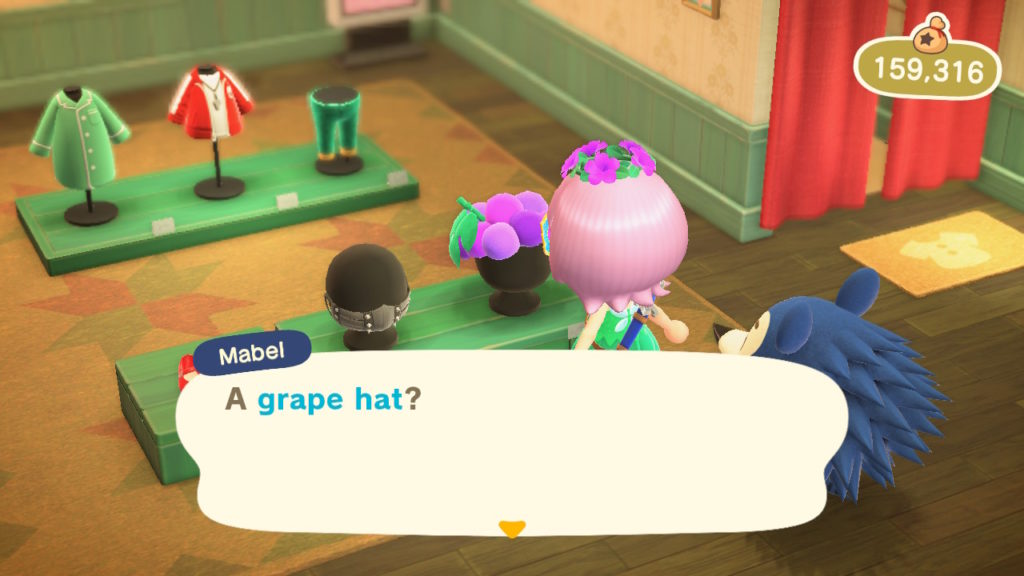
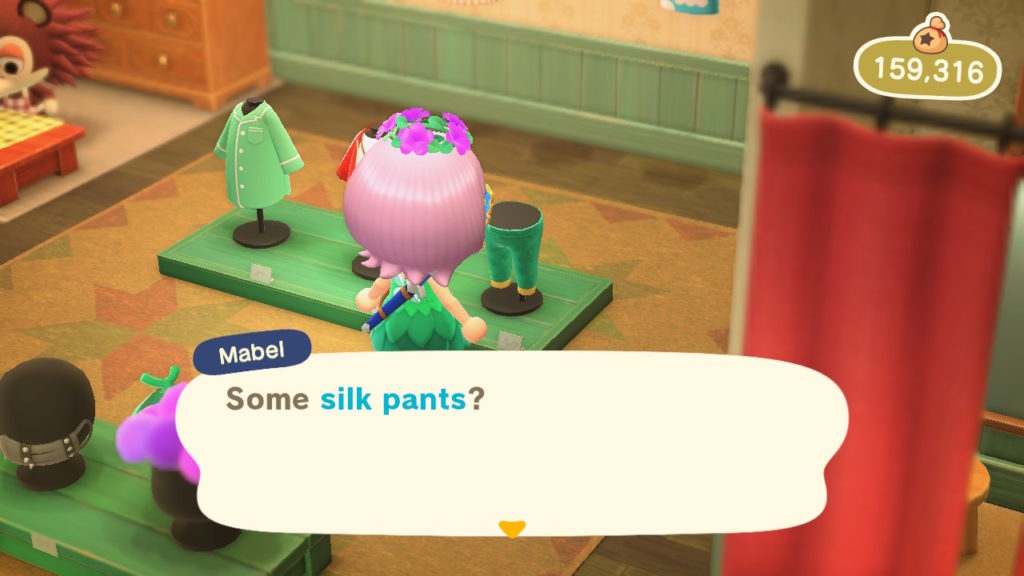
For this perceptive podcast, I spoke with game designer Moritz Wagner from Mimimi Games to talk about the studio’s history, stealth design, and their upcoming game Shadow Gambit: The Cursed Crew. We spoke about how the studio pivoted towards stealth/strategy with Shadow Tactics, and a whole lot on the ins and outs of stealth design. From there, we talked about Shadow Gambit and how the studio is trying to make a more accessible stealth experience, while still providing the challenge for their fans.

Owner of Game Wisdom with more than a decade of experience writing and talking about game design and the industry. I’m also the author of the “Game Design Deep Dive” series and “20 Essential Games to Study”
Remember when Pikmin 2 came out on Gamecube? It marked a considerable departure from the first game’s structure. Pikmin had a hard time limit, and it was rather a rush to complete the game within its 30 days on your first try. Pikmin 2 dispensed with that, giving players as many days as they wanted. It also had “dungeon” areas, semi-random underground mazes where even the day timer was paused. A considerable portion of the game was in those underground areas.
One of the less-remembered things about Pikmin 2 was that it had actual product placement in it. Many of the treasures you found were outright commercial objects, modeled and textured in the game, some with vaguely promotional names, like “Courage Reactor” for Duracell Battery, or “Quenching Emblem” for a 7-Up bottle cap. Even the European and Japanese versions had these, although they reflected products from their territories instead.
Presumably because the licensing deals for these objects have expired, the Switch 2 version of Pikmin 2 uses different, more generic items in place of the trademarked originals. The replacements are an interesting lot. Where they could have just removed the old textures and replaced them with solid colors, they put in fake ingredients lists (too small to read), “Established 1920” notices, fake slogans and logos, notices of product quantity in Imperial units with metric equivalent, and more. You’d almost believe Olimar was finding real goods from Earth, ones that you just haven’t heard of. The tip-off is, the names of the replacement products are just slightly too generic. “Coconut Water” and “Night Lip Balm” are descriptive but generic, and so but really able to be trademarked. They’re a nice batch of fake brands though. For “Pineapple Fresh Slices,” they even made up a realistic-looking US-style Nutrition Facts label!
The differences have been recorded in a video by ModenXP on Youtube, embedded below:
And now, as an exercise in overkill, here’s a list of all the old and new versions, and interesting things about the replacements:
| Courage Reactor (280 poko) | Duracell D-Cell battery | “Electric Power Super Battery,” a fake brand that replaces the multiple Duracell items among the treasures. It’s also a D cell. There’s a warning box that’s too small for me to read. |
| Quenching Emblem (100 poko) | 7-Up bottle cap | Bottle cap for “Spicy Ginger Ale, Premium Quality.” There’s some other text along the outer edge that’s just on the other side of the readability afforded by the texture compression. |
| Alien Billboard (80 poko) | Kiwi Shoe Polish, 1 1/8 ounce (31 gram) size | “Shoe Polish, highquality shoe care.” “Established 1920.” The size is 32 grams, “1,128 OZ” in the British style, using a comma as the decimal separator instead of a period. The slogan “Shine & Protect” runs along the outer edge of the lid. |
| Drought Ender (100 poko) | Old-style Dr. Pepper bottle cap | A bottle cap for “Coconut Water,” evidently a product someone would want to buy. The rim assures us, twice, that it is in fact “100% Pure Coconut Water.” Promise or threat, you decide. |
| Survival Ointment (90 poko) | A tube of ChapStick lip balm | “Night Lip Balm,” with “Extra Moisture.” Lots of tiny unreadable text on this one. |
| Gerkin Gate/Flavor Gate (100 poko) | A lid to a jar of Vlasic pickles | The only item with a different title. This is “Orange Jam,” “Made With Real Fruit,” “Organic Homemade Product.” 13.4 oz (380 grams). Shouldn’t they have just called it marmalade? |
| Creative Inspiration (100 poko) | Old-style bottle cap for RC Cola, eternal third-place in the cola wars | “Delicious! Black Berry Soda.” One of the more generic logos. |
| Patience Tester (130 poko) | A can of Sun Luck water chestnuts. How many company ad departments would let a licensor get away with implying their product tests one’s patience? | “Pineapple, Fresh Slices.” “In heavy syrup.” Oh, joy. (I don’t like pineapple, and pineapple syrup is not something I would ever care to try.) It’s interesting that they changed even the type of product here, although it’s the same sized can. |
| Healing Cask (60 poko) | A jar of Carmex salve, “FOR-COLD-SORES.” Even though the lid looks like it’s from the 50s, I think this is how the product looks even today. | “Organic” Aloe Vera Cream. Nice stylized rendering of a plant on the cover, but otherwise pretty ordinary. |
| Salivatrix (30 poko) | A lid for Dannon “Fruit on the Bottom.” Fruit on the bottom of what? It doesn’t say! It does tell us it has “Same Great Taste!”, but again, the same great taste of what? The mysteries belie this treasure’s paltry value. Bee the why, “Salivatrix” sounds like an enabler of a particularly niche kink. | “Morning Fruit Yogurt.” Aaah that’s right, Dannon makes yogurt! Did they remake Pikmin 2 just so they could fix their omission? Blueberry, and Low Fat, Net Wt. 15 oz (425.25g). Thanks for the two decimal places of metric accuracy, fake yogurt lid. |
| Thirst Activator (300 poko) | Cap to a bottle of Tree Top juice. What variety is left unspecified. One of the little jokes of the game is how far off the retail value the Salvage Pod’s valuation of your treasures is. 300 poko is pretty valuable! | “FRESH Organic Fruit Sauce.” The name is still Thirst Activator though. Brings to mind gulping down a nice hearty jar of Ragu’s finest, mm-mmm. Both versions of the treasure have arrows telling a consumer which way to open the jar. |
| Massive Lid (100 poko) | Old-style cap to a bottle of Yoo-Hoo Cola. Cola? The internet is mum as to the history of this mysterious product. I don’t want to imagine what it was like. | The cap now reads “Mountain Water.” It’s a metal bottlecap, as if to a glass bottle. At least it’s recyclable. The title is odd; it’s a small cap, there’s plenty of bigger lids in the treasure hoard. |
| Happiness Emblem (100 poko) | Another old-style bottlecap, this to a can of Squirt grapefruit soda. Squirt, a Dr. Pepper brand, is still made and sold even today. | Ginger Ale LIGHT. Has an ingredients list right on the cap, just like the Squirt cap had. The ingredients are even readable: carbonated Water, high-fructose corn syrup, ginger extract. Hey, I’d drink it. Nintendo’s localizers know their territory. |
| Durable Energy Cell (160 poko) | Duracell C-Cell battery. | Electric Power Super Battery, again, Duracell’s counterpart in the Pikmin ludomatic universe. |
| Endless Repository (130 poko) | A can of Beach Cliff Sardines, “Proudly made in the USA” and “in soybean oil.” | “Sardines, Skinless & Boneless.” “In olive oil & lemon.” The “pull ring easy-open” and fake UPC code are nice touches. This is one of my favorite fake products, even though I’ve never eaten a canned fish in anger. |
| Pondering Emblem (100 poko) | Cap to a bottle of Yoo-Hoo Chocolate Flavored Beverage. The pondering part of it is wondering what the hell Yoo-Hoo is made of. | “Milk Crown” Cream Soda. Nice stylized representation of a splash of milk. The cap tells us “artificial flavor & color.” Remember to demand natural flavoring and coloring from your fictional video-game beverages! |
| Abstract Masterpiece (30 poko) | A Snapple Cap. You can’t flip it over to see if there’s a Snapple Fact on the bottom. | Sunny Tropical Juice. “What kind of juice?” “Tropical.” At least the label tells us it’s made from the best natural fruit. No synthetic fruit here, oh no no. |
| Optical Illustration (140 poko) | Lid to a jar of Ragu tomato-based sauce. I joked about it, and lo, it has come into being. There is very little optical here, and it hardly qualifies as an illustration | “Tomato Basil” homemade pasta sauce. One of the faker-looking treasures. |
| Activity Arouser (100 poko) | The “W”-logo from the lid of a can of Wilson tennis balls. | One of the few overtly fake brands, with a logo of a flaming tennis ball and the cryptic word “TARAI” in a sci-fi font. No other information is supplied. This mystery is going to haunt me. |
| Proton AA (90 poko) | Duracell AA-Cell battery. | The third of the Electric Power Super Battery collection. It looks a whole lot like one of those battery brands you can find at a dollar store, that last roughly 23 seconds when put to use. |
| Drone Supplies (130 poko) | Underwood Deviled Ham Spread. A really distinctive package, round but wrapped in paper with a unique fold at the top. | Tuna Salad Spread. The kept the paper wrapping. This is the one with the realistic Nutrition Facts label on the back. |
| Fuel Reservoir (120 poko) | Duracell 9-Volt battery. | Last of the Electric Power Super Battery set. |
| Fruit Guard (130 poko) | A can (not just the lid!) of Tree Top apple juice. The words “Apple Juice” are not written in Comic-Sans, but it does look a lot like they are. | FRESH Organic 100% apple juice. FRESH seems to be the replacement brand for Tree Top. At least it’s not drinkable fruit sauce this time. Also has a Nutritional Facts label on the back (as does the original). |
| Nutrient Silo (130 poko) | Skippy creamy peanut butter. | Ribbon’s peanut butter. They made a cute little logo involving a pair of cartoon peanuts for it! I demand fan art of them immediately, get to work! Also has a Nutrition Facts box and fake barcode. |
| Yellow Taste Tyrant (100 poko) | The yellow, unpainted plastic lid of a wide-mouthed container of French’s mustard. The French’s logo is molded into the surface, and seems to react to light, which is interesting. | A green painted illustration of a hot dog with the words “Hot Mustard” twice. The modeled French’s logo is gone. |
| Stringent Container (130 poko) | A canister of Clabber Girl baking powder. | The canister is of “Baking Powder,” “Queen’s Quality,” “Double Acting” and “Gluten Free.” Established 1932! Like the original, has both nutrition facts and a recipe, here for a chocolate muffin. You can just make out that a “serving” of this can of baking powder has 55 calories. At the bottom of the nutrition facts it says “European Leading Brand.” |
| Hypnotic Platter (100 poko) | Bottle cap for A&W (presumably) Root Beer. Caffeine free. | “19TH Anniversary” premium orange juice. Apparently sold in soda-style glass bottles? |
27 Treausres that Changed in Pikmin 2 on Switch (Youtube, 14 minutes)
I wracked my brain trying to come up with something fun to post for the annual United States Pet Frightening Day. I came up with this. I’m tagging this sundrysunday, even though it’s Tuesday, because that’s my tag for all the borderline relevant posts.
This one is even more on-the-border (nooooow) than usual, right exactly on the edge between Premisestan and Irrelevania. The game-relevant part of it is, Cabel Sasser (Mastodon) is a long-time internet person who 16 years ago made for Youtube Buggy Saint’s Row: The Musical (we’ve linked it before), and more recently helped publish Untitled Goose Game and produce the Playdate (which we’ve written about before, even though I still don’t have one argh).

But this post has nothing to do with any of those things! On Cabel’s blog (and a couple of other sites-one year it was Flickr), for ten years, he made annual posts where he presented firework packaging found in local shops, until his city passed a fireworks ban in 2016.

We’re truly all the poorer for that, and more than once I’ve asked him, on Twitter, if he might someday continue the tradition. (Future readers: Twitter is a microblogging service that used to exist.) He’s never replied, which is how most people on the internet react to me, but I’m happy that he probably knows they were appreciated.
Here are links to each post he made, and every one of them is terrific fun:
2007 – 2008 – 2009 –2010 – 2011 – 2012 – 2013 – 2014 – 2015 – 2016
Here are just a very few highlight images to whet the appetite. Warning: Shoots Flaming Balls!
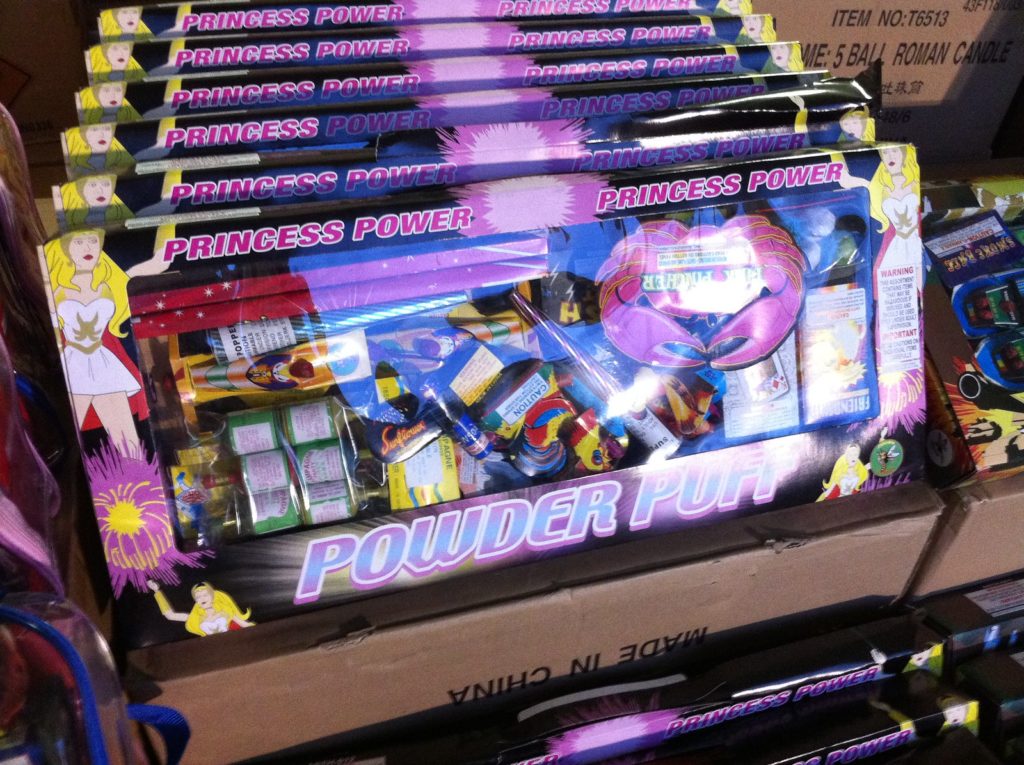
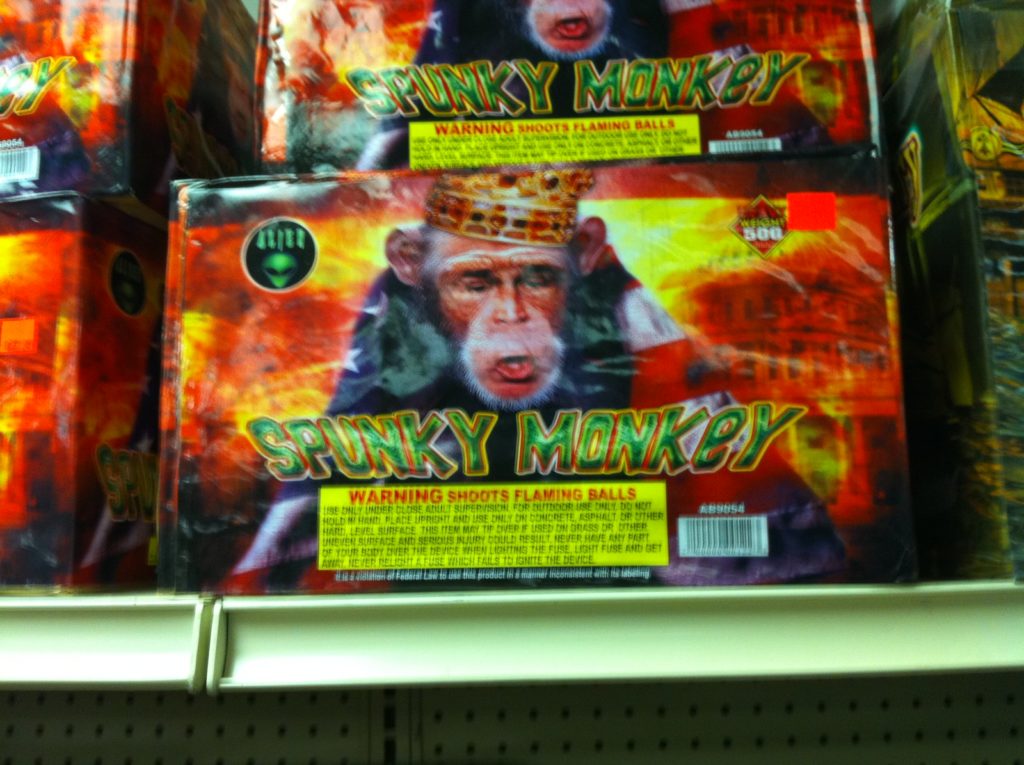
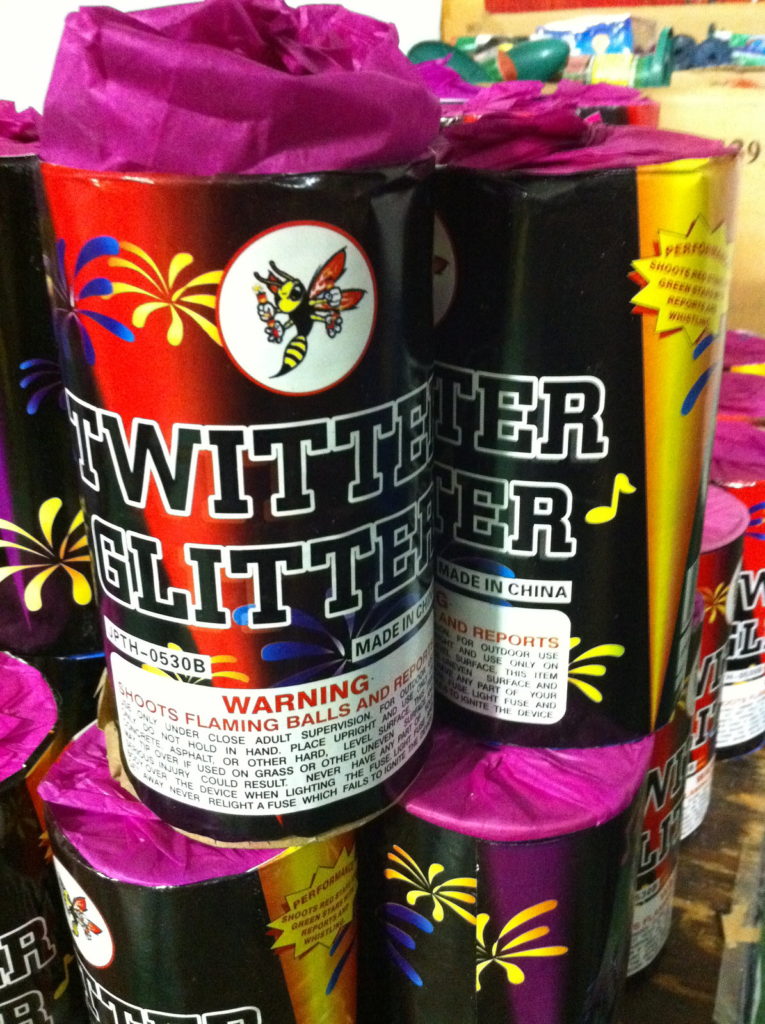
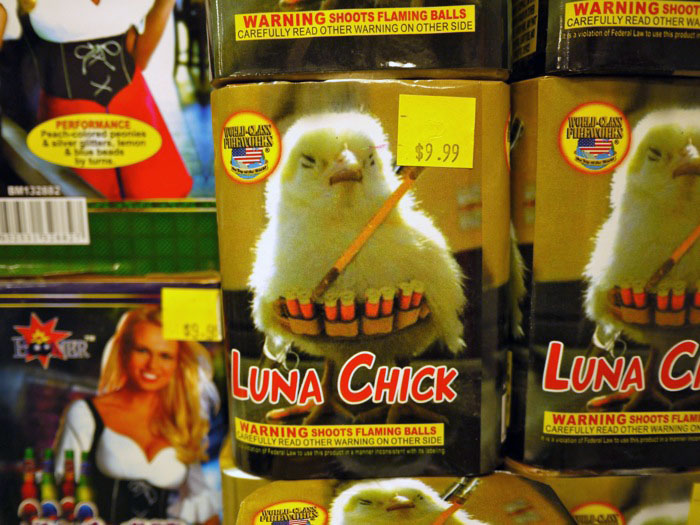
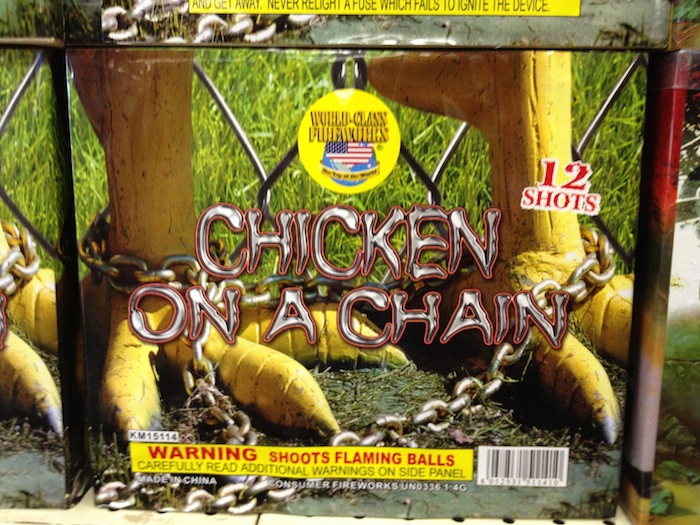
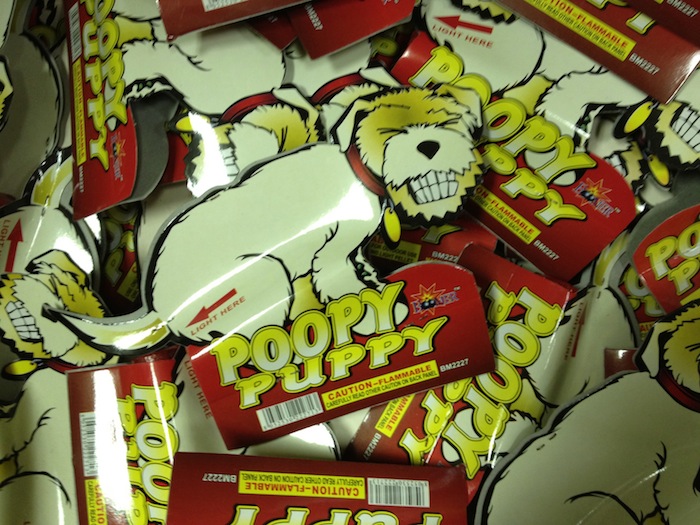
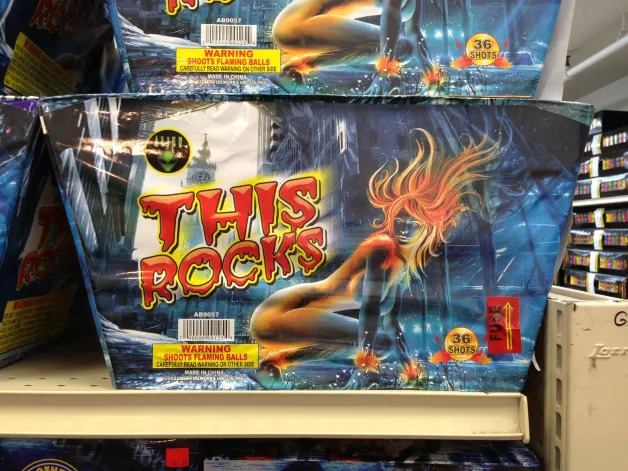
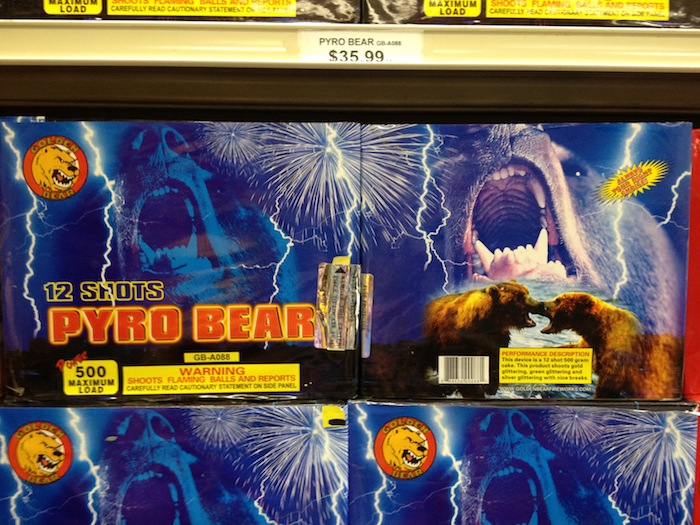
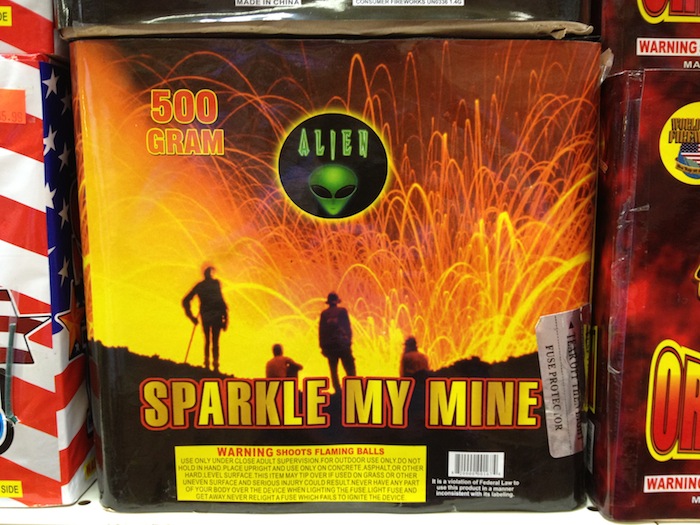
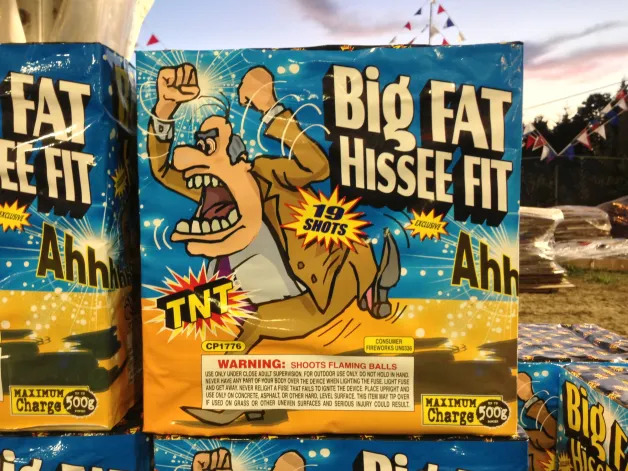
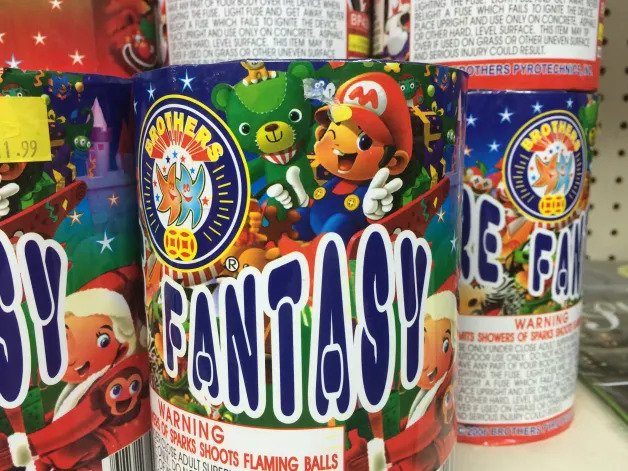
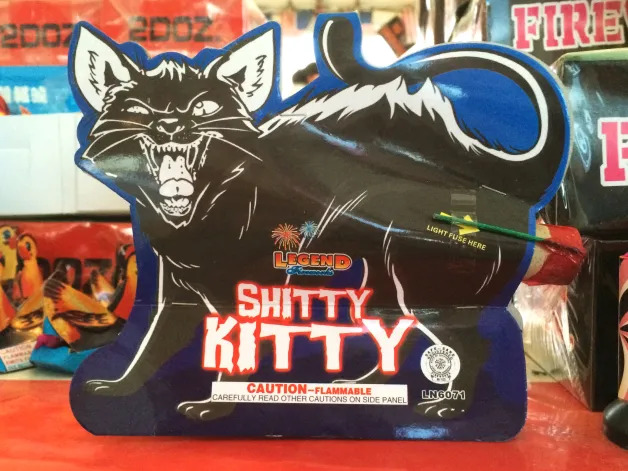

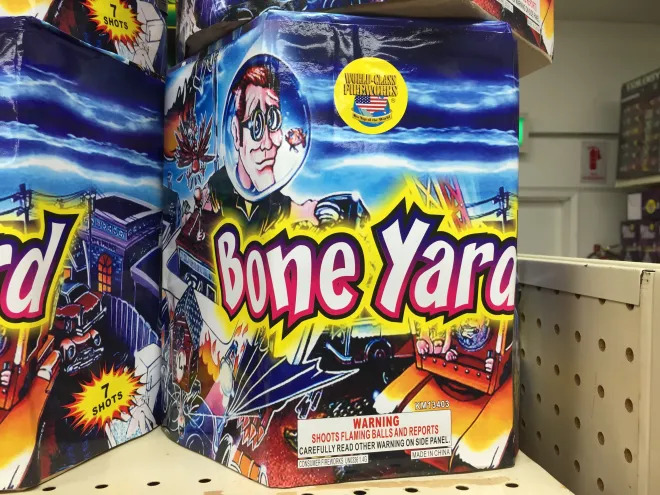
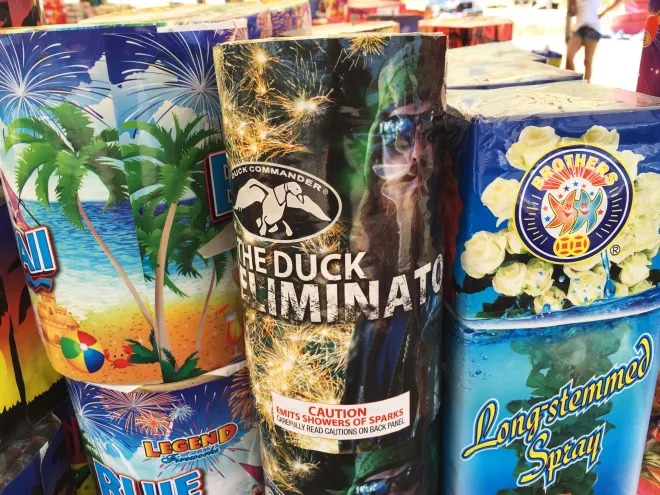

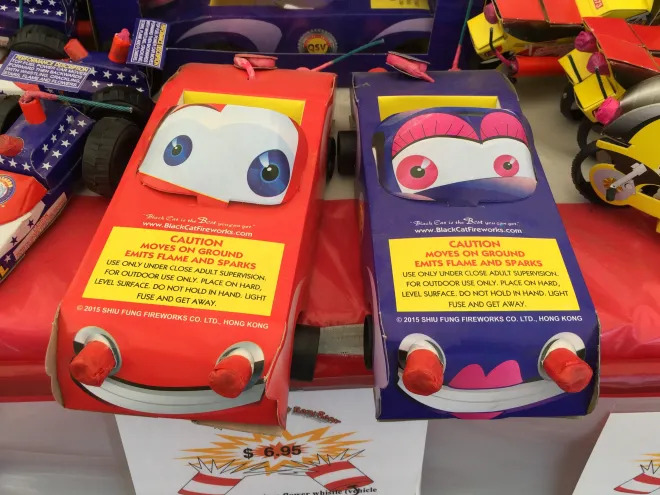
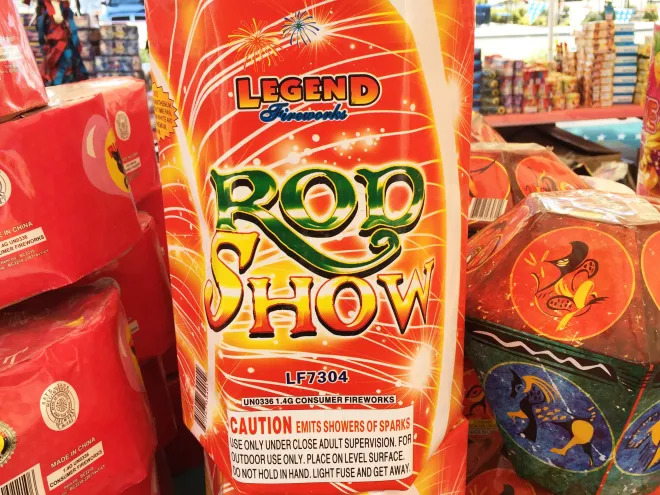
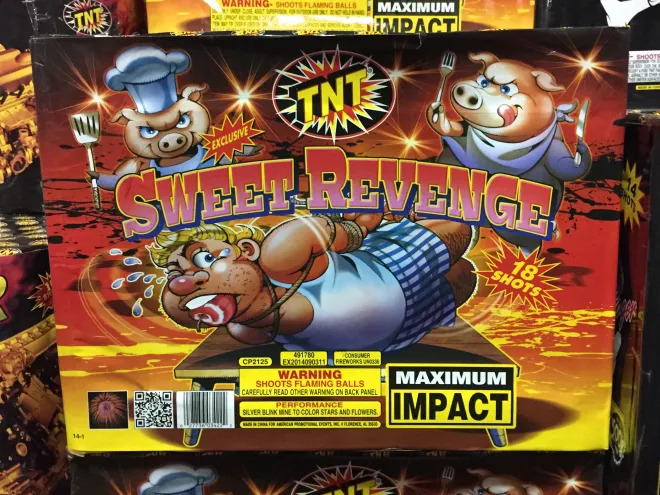
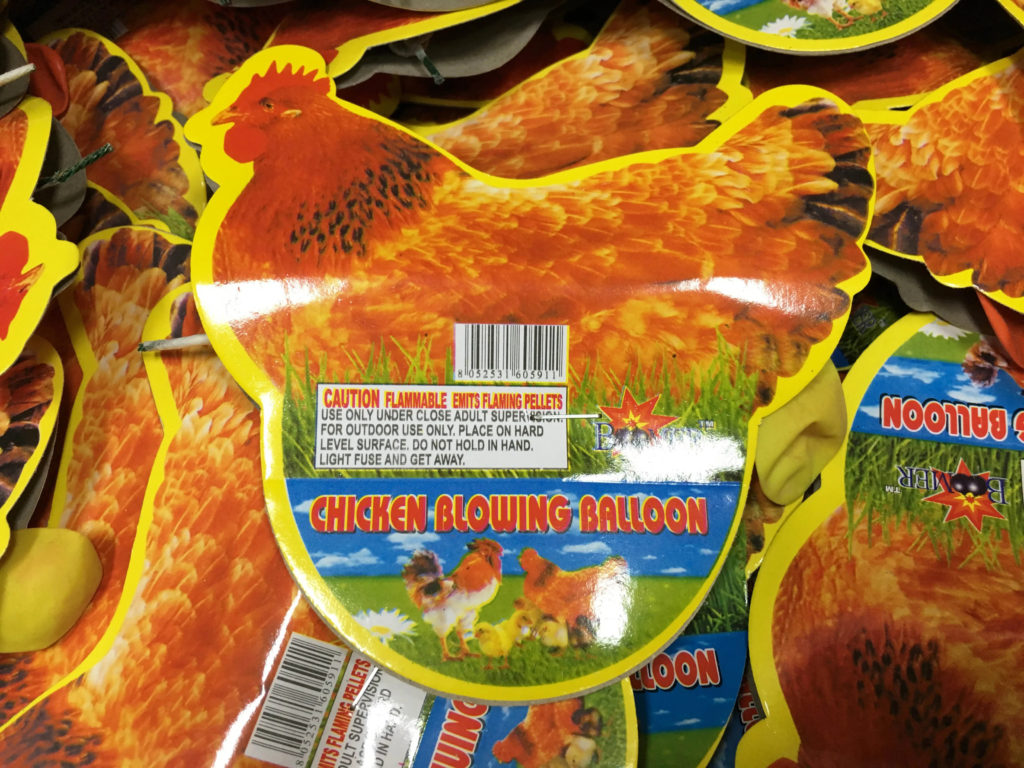
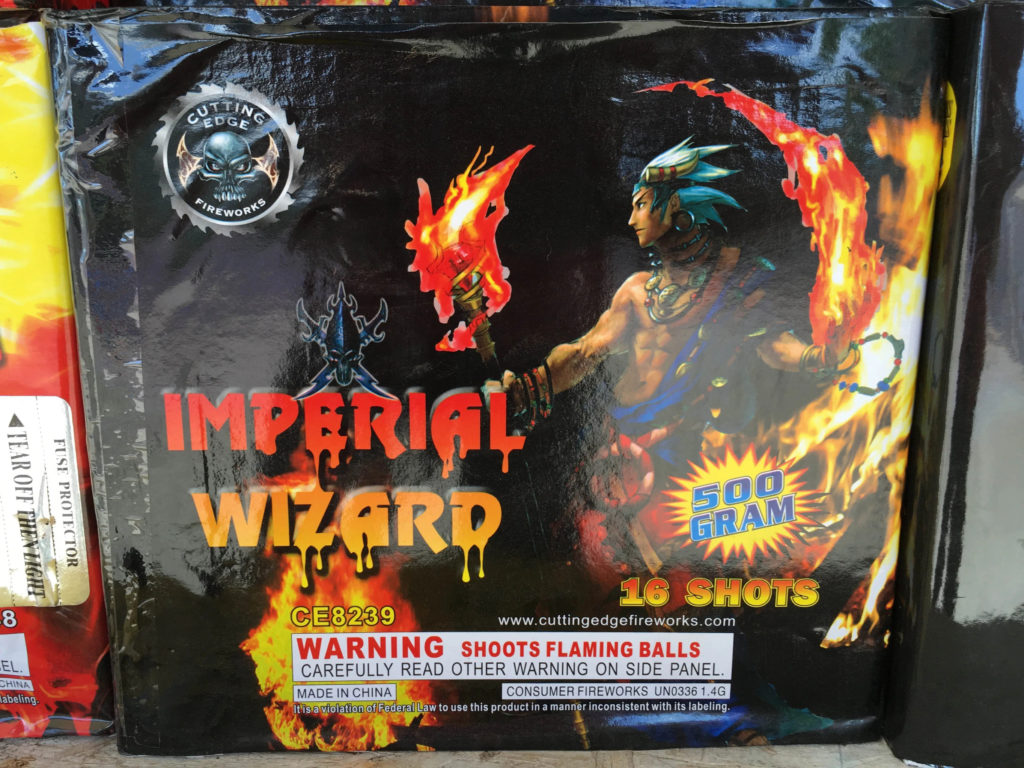
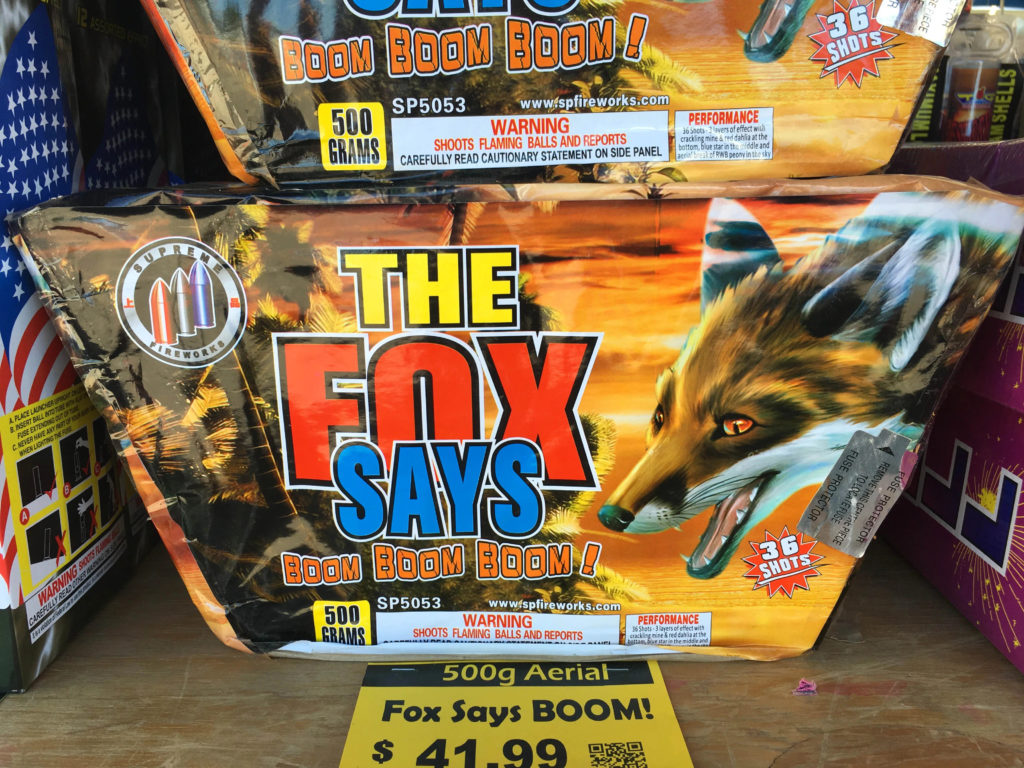
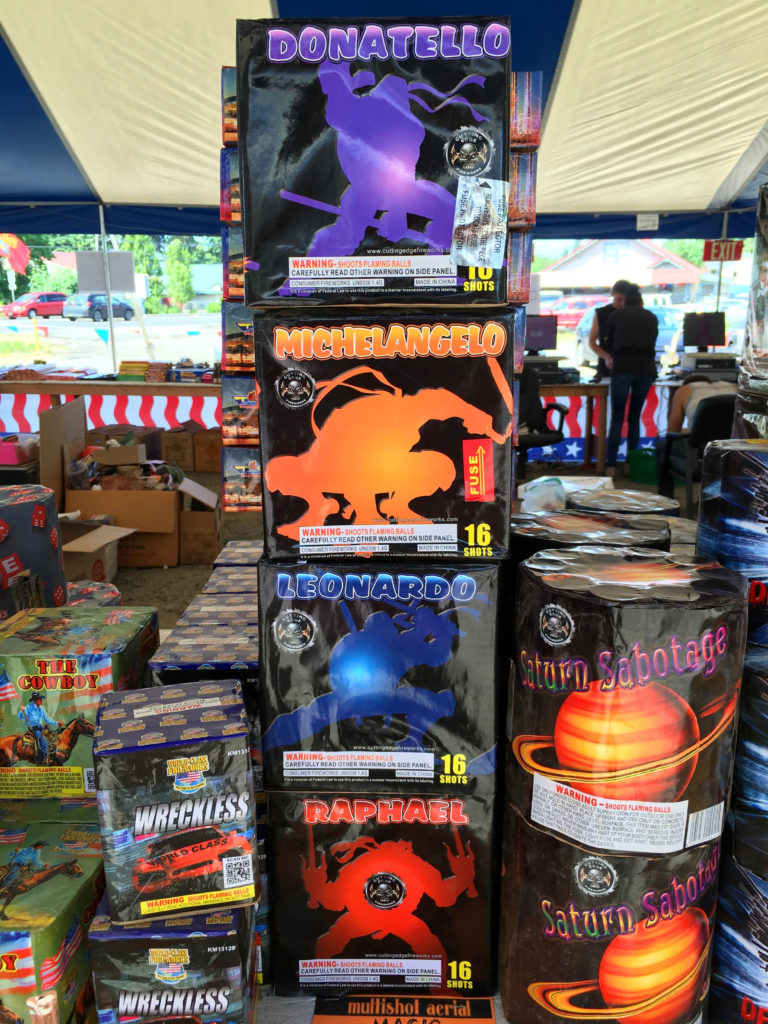
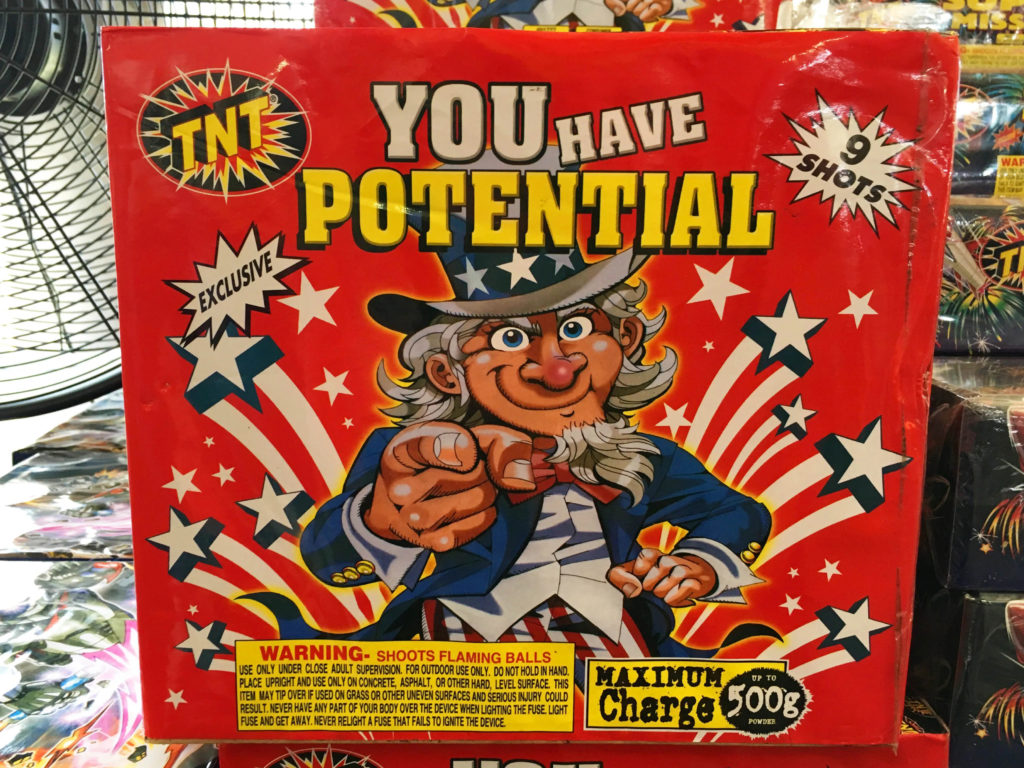
I’d like to point out this package in particular:

I presume all of the images in these fireworks packages are stolen by their creators from some place. Thing is, I know exactly where this image was stolen from! It’s the backglass of the Williams Junk Yard pinball machine! That face in the lower right, at the controls of the crane and partly hidden by the name, that’s Crazy Bob!

Maybe the Chinese artist assumed, in 2015, that Junk Yard was some super-popular United States property that would instantly fill their coffers with tasty lucre. We’ll never know.
Believe me when I say this just scratches the surface. The internet is not forever, so please, visit Cabel’s sites and enjoy them while you can!
alienmelon is Nathalie Lawhead, a desktop toy creator who’s made a lot of cool things, like the Electric Zine Maker and Cyberpet Graveyard. Back in 2021 she made this great roundup of her own desktop toy work, as well as that of others. It was a whole field of computer software, not really games, that faded into obscurity right around the time that social media, that bane of all good internet things, started becoming big. Desktop toys were often distributed on personal websites, and Facebook and Twitter tend to muscle out those kinds of places.

Some of the toys she’s made are the Electric Love Potatoes, virtual stray cats, fake virus checkers, love stories between the files on your computer, and RUNONCE, a virtual pet you can only play with a single time, after which it’s dead and gone, refusing to run again.
The article lists all of these, but with that it’s just getting started, linking to a plethora of old toys. One that comes to mind personally is the classic Neko desktop pet, a pixel-art kitty cat that would chase your cursor then fall asleep.
It’s a great introduction to/recollection of an old and vanished age of software. And it also contains the phrase, “In retrospect I don’t think it was cool of me to scare my mom with a potato.”
Make Tiny Weird Software, Please! (all about desktop pets, old computer eras, and virtual toys)
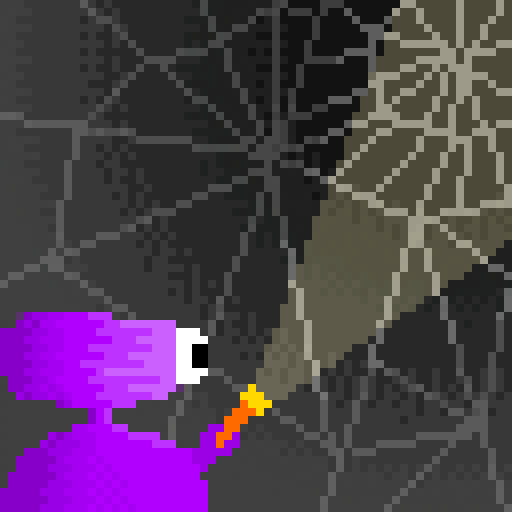
The World Wide Web is now over thirty years old. In that time, more content has vanished from it than remains now, but some of it can still be dredged up from the shadowy archives of the Wayback Machine. This is the latest chapter in our never-ending search to find the cool gaming stuff that time forgot….
Part of the network of the similarly venerable shmups.com, The Guardian Legend Shrine is nearly the ideal game shrine, a static site crammed full of screenshots, strategy tips, fan art and fiction, and generally just everything of interest to a fan of the NES game.

The Guardian Legend, recently covered by Jeremy Parish within Metroidvania Works as part of his penance for coining the term in the Before Times, is a cult classic in the genre. Design by “Moo” Niitani at Compile, it combines their deadly-sharp shooters with the exploratory gameplay of The Legend of Zelda. It even has its own form of the confusion as to who the main character is supposed to be. In this case, it’s pretty obvious in play that she’s a cyborg bikini girl out to blast aliens, but you wouldn’t know it at all from the manual or US box art. She’s just “The Guardian,” because otherwise it’d be more evident that you play as a girl.

Last updated in 2002, the heyday of the age of the internet fan shrine, its art section is full of crudely-drawn sent-in art of its main character Miya, or Alyssa, or whatever she’s called. Most of it is chaste, thankfully-this isn’t DeviantArt we’re talking sbout here. I wonder about the people who sent those drawings now, and how they feel about work they made probably as a kid still floating around the internet. The game was already nine years old at that time, so they really couldn’t have been that young?

It seems likely that no one’s worked on the site for a long long while. The hit counter and guestbook don’t work, and the link to an archive of NES manuals is broken. The newest entry on the News page says they had lost their FTP password, but then found it again, and a new update should be coming soon. That was in 2002, so you know, any day now.

The Downloads page has links to the game’s roms, shamelessly promulgated to all passers-by, as well as a lot of other media taken-from and inspired-by the game. As just one more example of just how old this is, the suggested emulator for playing the roms is Nesticle.
The original game is 34 years old now, and not getting younger. The age of the web fan shrine is long past, and its parent site Shmups hasn’t itself been updated since 2010. Who knows how much longer it’ll be with it. SO please, take a few moments to explore this relic of a past age. Do it for me. Do it for “Moo” Niitani. Do it for Miya/Alyssa/The Guardian/whatever. And especially, do it for Blue Rendar. Look into those googly eyes, how could you say no to them?

Christopher Emirzian’s Guardian Legend Shrine